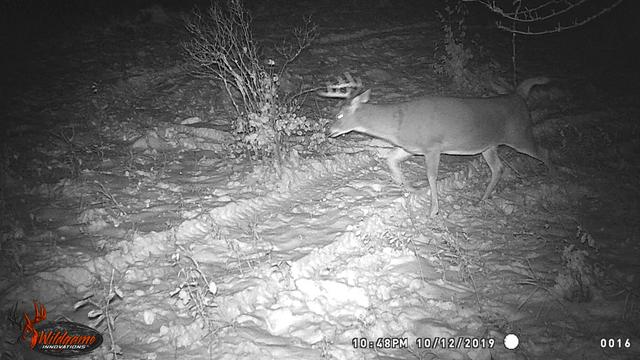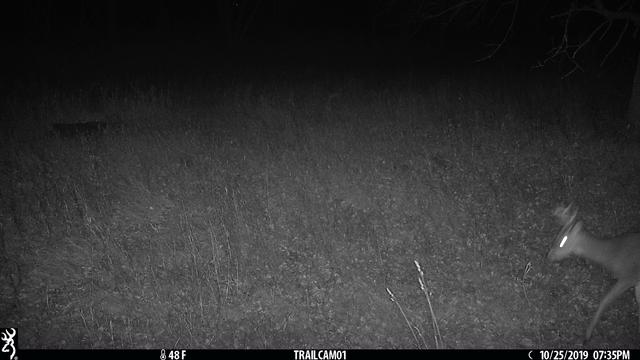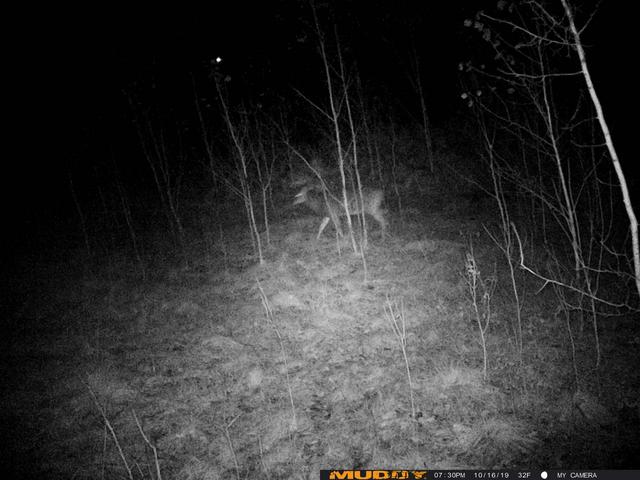This may read more like an article than a forum post...or maybe not since I'm not a professional writer.
I want to share some of my experiences with trail cameras in general for those that are looking at buying more, just getting into it or want to get more out of them.
Trail cameras are a great tool, but can also be a great (and potentially expensive) hobby. Personally, I probably should seek professional help because I will admit, I'm addicted to them. I go out of my way to stop in when I'm driving by a Fleet store, Wal-Mart, any local hardware or sporting goods store just to see what they have for trail cameras and perhaps get lucky and find a couple on the clearance rack. I don't always buy one but I've probably bought more than I should over the years. As I sit here writing this I have 22 cameras out on our property and I'm already scheming on which ones I'm going to pull out of the rotation and replace after this season. I've already pulled and added a few over the past month. The number fluctuates but generally trends up.
I'll start by going over what you should most likely look for if you are purchasing a new camera. I'm not going to put to much into price right now. This part is more about features. I am also not going to mention brands. I have tried most of them. Some are better or worse than others in my experience. Some are way better or way worse than others. All I will say is that if you need advice on which brand, do some research and read as many reviews as you can or you can send me a PM if you have a question on a certain brand and I'll give you an honest opinion. I've tried most of them at some point.
First of all you should consider what exactly it is that you are watching. I don't mean what kind of animal. I mean what kind of environment, if that's the right word. A camera dedicated to watching a salt lick vs a camera dedicated to watching a field would need different features. How far do you want or need to see? What kind of picture quality do you want?
For long range pictures, such as those on a food plot or field, you should be looking for the furthest effective flash range you can find. Most cameras out there will say right on the box what kind of range they have. I've seen as low as 30 feet to as much as 120 feet for night images. I would recommend no less than 80 feet for an open area. This will whittle down your choices of the type of flash rather quickly as the only type of flash that will reach that far is the standard "red glow" IR flash.
For a salt lick, scrape or carcass camera that will be facing the target at close range, any flash range will do but the cameras with longer ranges will tend to "white out" more on deer pics. It's better to use lower range cameras in these situations as the flash is not as powerful and you'll get clearer pictures. Here's an example of what I mean:
 What type of flash?
What type of flash?There are three types of night illumination you can choose from. The first is a normal "flash" camera, which was quite common ten years ago but hard to find these days. These will generally give you much more detail and great night pictures (in color) with little to no blur. Most people don't like to use these because they believe the flash will spook the deer. In my experience though, it's not the flash. More on that later... Flash cameras do have the downside that they have a fairly low effective range and are best suited for watching a specific thing, such as a scrape or salt lick. The second type of flash is your standard "red glow" IR. The longest range for night pictures will be this type of flash, though there are plenty out on the market with shorter range. Range is determined by how many LED's are on the camera and how much power is used to illuminate them. IR cameras in general are much more susceptible to "blur" when a moving target goes through your detection area. This is one area where certain brands outperform others but regardless of brand or how much you spend, you will always have at least some "blur" on night photos using red glow LEDs. Here are a few examples of that:


The third type of flash is the "black flash" which basically uses a black or very dark purple LED instead of a red one. These are often advertised as "no glow" cameras. My personal opinion is that they are somewhat effective in reducing the occurrence of your quarry noticing the camera and I'm sure are much more effective in that regard if you're using a camera as security surveillance but since I'm using mine strictly for watching wildlife I can't attest to that personally. For watching deer, I'm actually not very impressed with any of the no-glow black flash cameras that I've tried. I have several gripes when it comes to these types of cameras. For starters, they tend to have a very limited effective range which eliminates a lot of situations you might want to use a camera on such as an open area. The furthest ranges I've seen are maybe 50 to 60 feet for these. The second big issue I have is that these cameras tend to give you pictures that are a lot more "grainy" at night. Again, some brands are better than others but I haven't tried any brand where their no flash cameras produce as high a quality picture as their standard red-glow IR versions do. It's always more "grainy". In my opinion, no glow or black flash cameras are not worth the extra money...but that's just my opinion. below are two pictures from the same brand of camera showing the difference. First is the red glow IR and second is the black flash. I can give more examples but this is going to be long enough as it is...
 free pic upload
free pic upload Hang 'em high!
Hang 'em high!I mentioned above that it's not the flash that spooks the deer. I don't actually believe that to be 100% true. I believe it to be 99% true. I do know that if you follow my advice I'm about to share, very few, if any, deer will notice your cameras. When picking a spot to mount a camera you should always mount them as high as you possibly can and face them down toward your target area that you are watching. The higher the better. In some cases, such as along a fenceline in an open area with no trees, it isn't possible but for most spots I mount cameras I can get them at least 8 feet off the ground. Somebody on this forum (I apologize as I don't remember who) posted a YouTube video of why to do this several years ago. That was an eye opener for me and I have been following the advice ever since. I can tell you with 100% certainty that it does actually work and it does not matter what kind of flash your camera uses or even if your camera makes any audible "clunk" sounds when the camera is taking pictures. If you put the camera up high, the deer don't notice it nearly as often as they do when it's at eye level to them. I have a folder on my computer desktop with 1124 images I've saved of deer from just this year. You'll have to take my word for it as posting all 1124 of them would take too much time and space but I scrolled through the whole thing just before writing this and I found two pictures where the deer seems to be looking up at the camera when it's mounted high. Two. I do have a couple of cameras on the field that I was not able to put very high (have them mounted on top of fenceposts) and I found 13 images where the deer are looking at the camera out of 162 total images from those cameras (I actually stopped typing this for 10 minutes and went into the folder and counted). All of the rest of my cameras are mounted at least 8 feet high.
I found the YouTube video I just referred to. It's worth a watch.
MP are a scam!The last subject I want to go over is megapixels. Again this is my opinion, but I can back it up with some basic facts. Don't fall for it and end up paying $20-$50 more for a camera that doesn't offer any benefit whatsoever. There is only ONE situation where megapixels make a difference and that is if you actually intend to print and frame a picture. If you're like me and 99.9% of other outdoorsmen using trail cameras according to a study I made up for this (but it probably not far from the truth) you only look at your trail camera photos on your computer or phone screen. Sure, you might print out a couple of the "big boy" to put up on the wall of your hunting shack to help get the others in your party excited for the hunt but most if not all of the pictures from your trail cameras are going to be viewed on a computer screen whether you're showing them to family or friends or posting them on a forum. I've got a secret to share with you. Actually, it's not a secret but most people are simply unaware. An HD computer monitor is only capable of showing......wait for it..........2.1 megapixels. That's it. 2.1. There's a lot more in the internal guts of a camera that go into picture quality than megapixels. A good example is posted above with the Red glow vs Black flash camera pics. Both of those are 16MP cameras.
Here's another example which backs up two of my points above. First point being that a "white flash" normal flash camera gives superior quality night pictures and the second point being that MP are a sham. This is a very old camera which unfortunately went to trail camera heaven a few years back and I had to replace it. This camera produced 1.5 megapixel pictures and to this day had the clearest pictures of any camera I've ever owned.
 photoupload
photouploadAnd just for the fun of it...this last one is from a 20MP (yes, TWENTY) red glow IR camera taken this year:

OK, well time for me to get off of my soapbox. I'm sure I can come up with more but these would be the main points I wanted to share. For those of you who actually took the time to read the entire post, thanks. If you're going out in the deer woods this weekend, good luck and most importantly be safe!!




